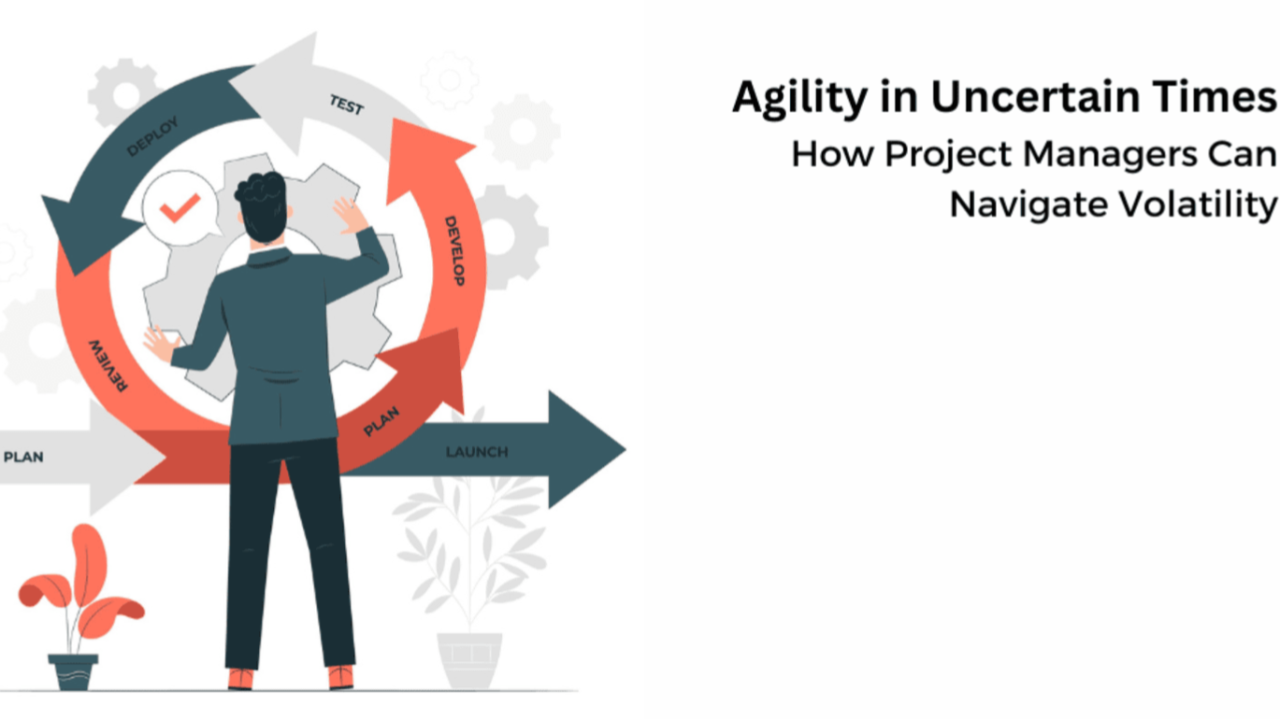
Agility in Uncertain Times: Navigating Volatility
Market disruptions, geopolitical uncertainties, and rapid technological advancements are reshaping industries and demanding a heightened level of agility in uncertain times. For project managers, especially PMP-certified professionals, adapting to these shifting dynamics has become a core skill. Integrating agile methodologies offers a structured yet flexible approach to thrive amidst volatility.?Mastering agility in uncertain times enables project managers to lead effectively and reduce risks. This approach ensures they deliver value-driven results even in unpredictable conditions.
Why Agility in Uncertain Times Matters More Than Ever
The traditional waterfall project management approach, while systematic, often falls short in environments characterized by rapid changes. Agility in uncertain times ensures project managers can pivot quickly, reprioritize tasks, and maintain stakeholder confidence. Agile methodologies, built on iterative cycles and adaptive processes, empower project managers to respond effectively to evolving priorities and unforeseen challenges.
Key Benefits of Agility:?
1. Adaptability:
Agile frameworks like Scrum and Kanban foster quick pivots and iterative improvements, helping teams remain responsive.?
2. Stakeholder Engagement:
Regular touchpoints, such as sprint reviews and retrospectives, ensure all stakeholders are informed and aligned.?
3. Risk Mitigation:
Continuous delivery models identify potential issues early, allowing for proactive solutions.?
4. Resilience Building:
Agile practices encourage teams to embrace change, fostering a culture of resilience and innovation.
Understanding these benefits is crucial, but how can project managers apply agile strategies in unpredictable environments? Let’s explore a roadmap for success.
Integrating Agility: A Roadmap for PMP Professionals?
PMP-certified managers excel in structured execution, but agility enhances adaptability. By integrating agile principles, they can create a hybrid approach that marries the best of traditional and modern methodologies. Here are some actionable steps:?
1. Incremental and Iterative Planning:
Break down large projects into smaller, manageable segments, allowing for regular evaluation and recalibration.
2. Feedback Loops:
Engage stakeholders frequently to ensure objectives remain relevant and achievable.?
3. Empowering Teams:
Transition from directive leadership to servant leadership, enabling teams to self-organize and make informed decisions.?
4. Leveraging Agile Tools:
Platforms like JIRA, Trello, and Asana enhance transparency and streamline task management.
5. Focusing on Deliverable Value:
Shift focus from completing tasks to delivering value, ensuring outcomes meet both stakeholder and market needs.?
Case Study: Navigating a Supply Chain Disruption with Agility?
Context: A global electronics manufacturer was poised to launch a flagship product. However, geopolitical tensions and pandemic-induced lockdowns disrupted their supply chain, delaying critical component deliveries and jeopardizing the timeline.?
Challenges Faced:?
领英推荐
Agile Actions Implemented:?
1. Reprioritizing the Backlog:
The project manager adopted a Scrum approach, shifting focus to high-priority features essential for launch.?
2. Collaborative Problem-Solving:
Daily stand-ups brought together cross-functional teams, enabling quick identification of bottlenecks and collaborative resolutions.
3. Rapid Prototyping:
New supplier components were tested and integrated into the product design in short iterations, reducing lead times.?
4. Transparent Stakeholder Communication:
Weekly reviews kept stakeholders updated on progress, challenges, and adjustments to the project plan.?
Outcome: Despite significant disruptions, the product launched within a revised timeline of eight months. The agile approach not only minimized delays but also bolstered team morale and enhanced stakeholder confidence.?
Strategies for Managing Volatility with Agility?
Building on this case study, let’s explore proven strategies that project managers can use to tackle uncertainty head-on.
Scenario Planning:
Develop best-case, worst-case, and most-likely scenarios to prepare for a range of potential outcomes.
Data-Driven Decision-Making:
Leverage real-time analytics to make informed adjustments to plans and strategies.?
Prioritizing High-Impact Deliverables:
Focus resources on tasks and features that deliver the greatest value to stakeholders.?
Fostering a Culture of Resilience:
Encourage teams to view challenges as opportunities for innovation and growth.
Continuous Learning and Certification:
Pursue agile-specific certifications, such as PMI-ACP, to deepen expertise and adaptability.
Final Thoughts: Turning Challenges into Opportunities?
Agility in uncertain times is not just a methodology—it’s a mindset essential for navigating today’s complex project landscapes. PMP-certified professionals who integrate agile practices can drive impactful results, even in the face of uncertainty. By fostering adaptability, collaboration, and value-driven approaches, project managers can transform disruptions into opportunities for innovation and growth.?
As Sun Tzu said, “In the midst of chaos, there is also opportunity.” Let’s embrace agility to thrive in the ever-changing landscape of project management.?
Have you faced challenges that required an agile approach? How have you leveraged agility in uncertain times? Share your experiences and strategies in the comments to inspire fellow project managers!